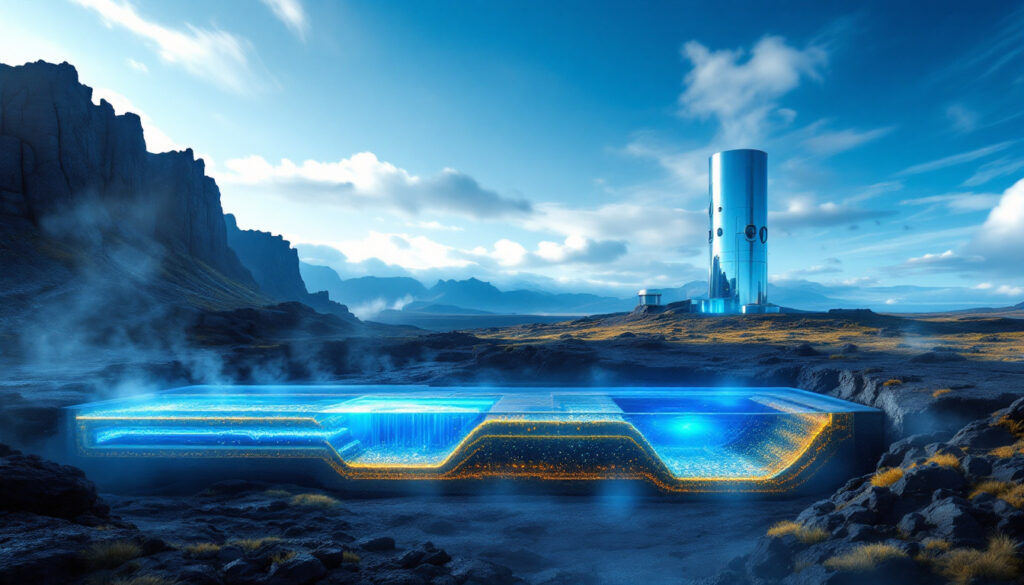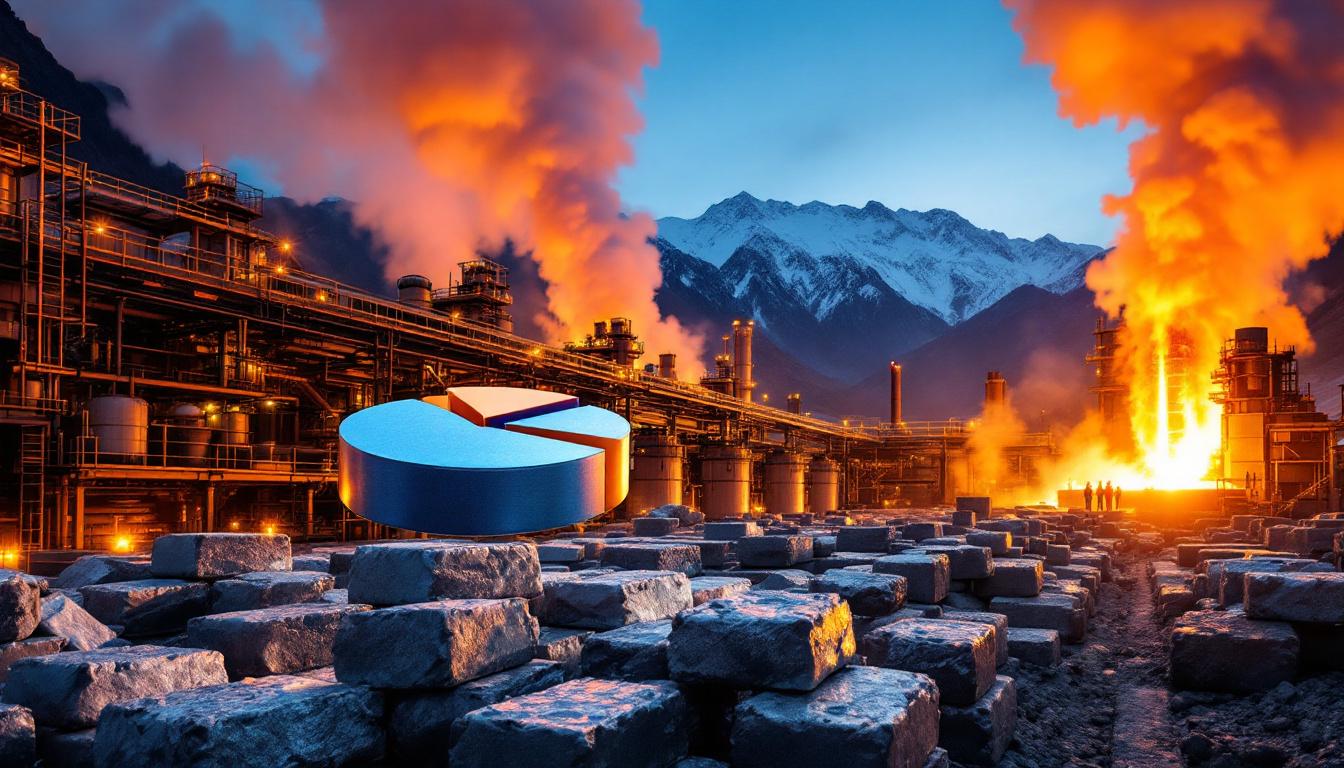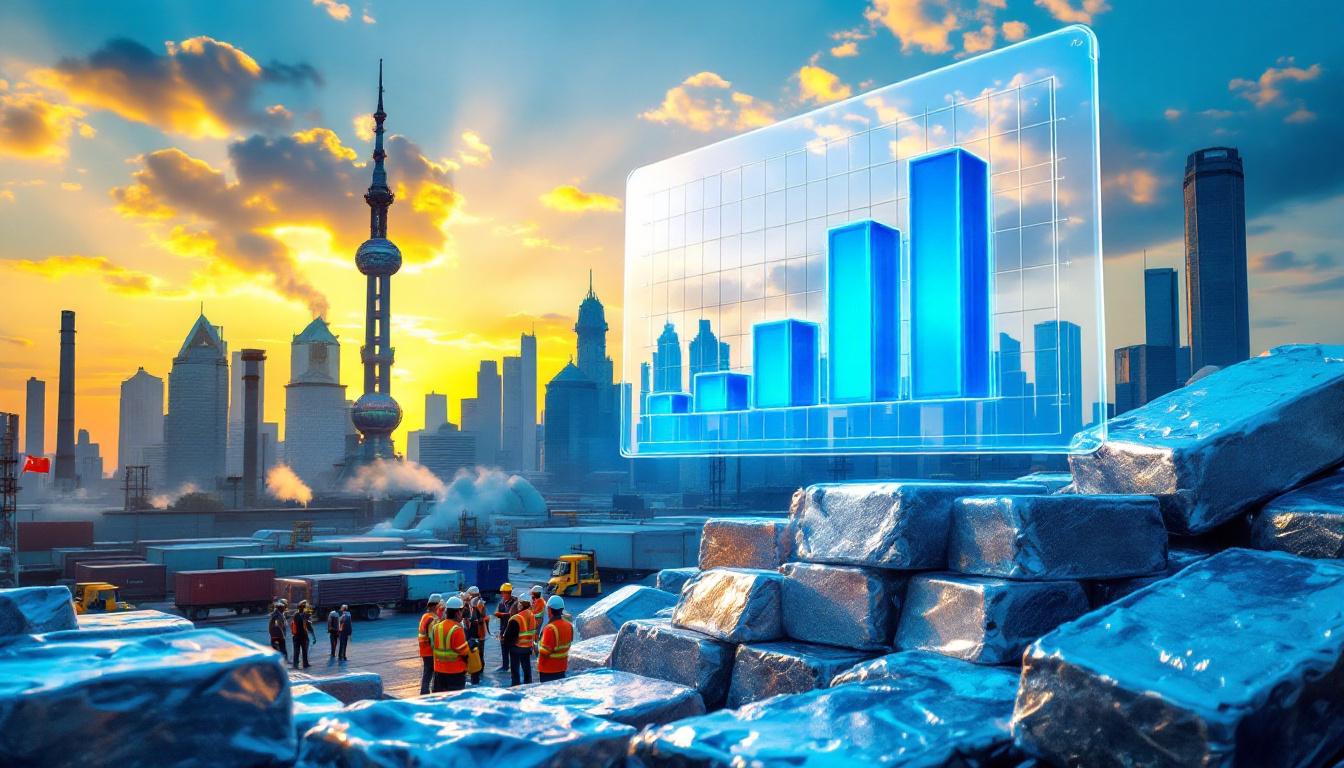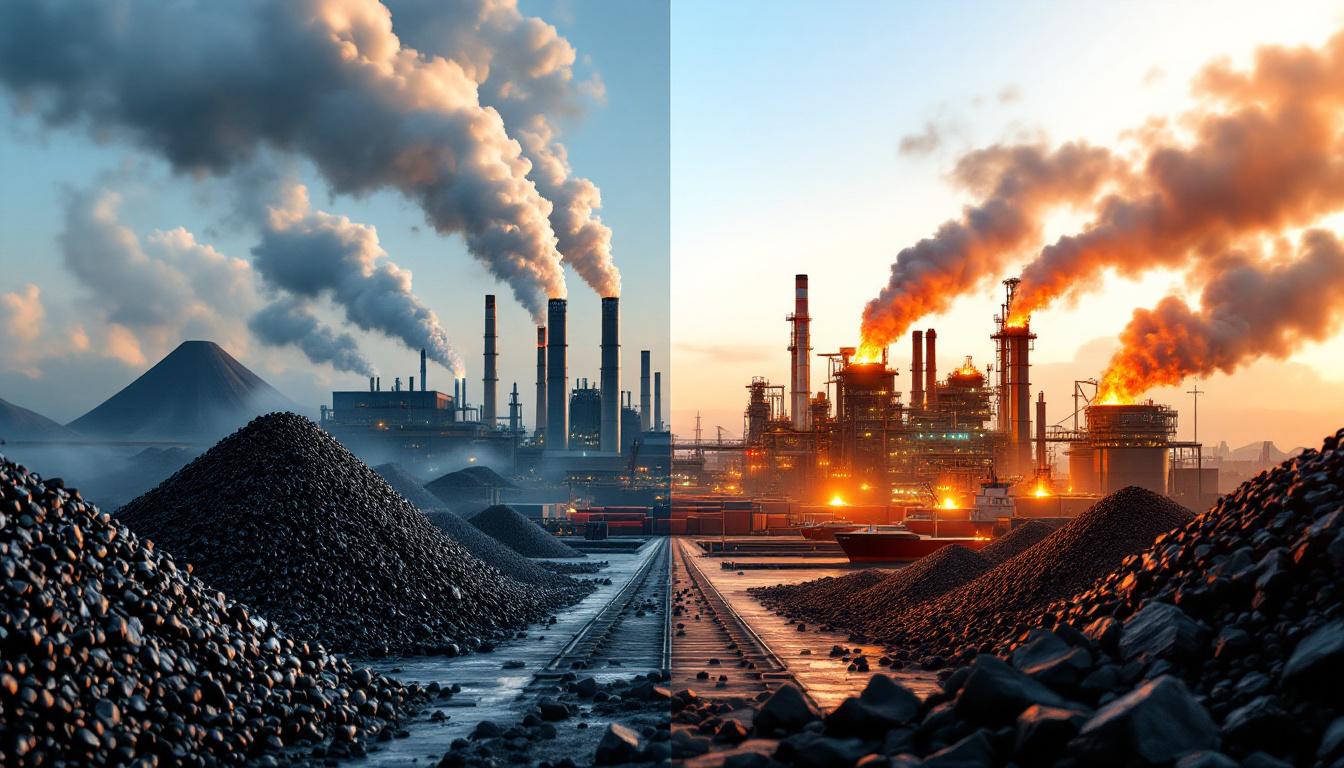Understanding Carbon Sequestration in Iceland
Iceland stands at the forefront of carbon sequestration technology, leveraging its unique geological composition and abundant renewable energy resources. As global CO2 emissions exceed 37 billion tonnes annually, Iceland's pioneering approach to carbon capture and storage (CCS) offers a promising, albeit currently limited, solution to our climate crisis.
The country's volcanic landscape, composed almost entirely of basalt, provides ideal conditions for carbon mineralization – a process that permanently locks away carbon dioxide in stone form. While this technology currently captures only a tiny fraction of global emissions, projects like Climeworks' Mammoth plant demonstrate the growing potential of this climate mitigation strategy.
What is Carbon Sequestration?
Carbon sequestration refers to the process of capturing and storing atmospheric carbon dioxide (CO2) to mitigate climate change. This technology has become increasingly necessary as the world approaches the critical 1.5°C warming threshold identified by climate scientists.
"As the world closes in on 1.5° of warming, we're going to have to start actively removing carbon from the atmosphere," notes climate scientist Ian Burron. "Emission reductions alone won't be sufficient."
Carbon sequestration takes two main forms: biological and geological. Biological sequestration occurs naturally through plant photosynthesis, where carbon is stored in biomass and soils. However, this approach is limited by the growth rate of plants and vulnerable to reversal through wildfire, logging, or land-use changes.
Geological sequestration, the focus of Iceland's efforts, involves artificially capturing CO2 and storing it permanently underground. This method has been employed since 1972, primarily through Enhanced Oil Recovery (EOR), where captured carbon is injected into oil fields to extract additional petroleum.
The Science Behind Carbon Sequestration
The geological sequestration process begins with capturing CO2, either directly from industrial emission points (like power plant smokestacks) or directly from the air through Direct Air Capture (DAC) technology.
Point source capture typically employs chemical sorbents—substances that absorb CO2 when cool and release it when heated. These systems can capture over 90% of emissions but require significant energy, reducing power plant efficiency by approximately 25%.
Direct Air Capture, the newer and more energy-intensive approach, requires up to 95% of the energy generated by burning fossil fuels to extract the resulting CO2 from ambient air. This high energy demand makes renewable energy sources essential for truly carbon-negative operations.
Once captured, the CO2 is compressed under pressure exceeding 73 bar until it becomes a supercritical fluid—having properties of both a liquid and a gas. In this state, it can be transported via pipeline and injected deep underground into suitable geological formations.
Key Storage Requirements for Geological Sequestration
Successful carbon storage depends on specific geological conditions. Host rocks must possess two critical properties:
- Porosity: Sufficient pore spaces to accommodate the injected CO2
- Permeability: Interconnected pores allowing fluid movement
Suitable rock types include sandstone, conglomerate, and certain limestones. In formations with inadequate natural permeability, techniques similar to fracking can enhance fluid movement, though these may raise concerns about induced seismicity (small earthquakes).
Two primary storage mechanisms exist: trapping and mineralization. Trapping relies on impermeable cap rocks (typically shale) to physically contain the CO2, similar to how natural gas is trapped. Mineralization, Iceland's specialty, involves chemical reactions that convert CO2 into stable carbonate minerals like calcite, magnesite, and siderite.
How Does Carbon Sequestration Work in Iceland?
Iceland offers unique advantages for carbon sequestration that few other locations can match. The country's geology consists almost entirely of basalt—a volcanic rock typically considered unsuitable for traditional CO2 storage due to its low porosity.
However, Icelandic basalt contains something special: vesicles. These small cavities, formed by trapped air bubbles during lava cooling, provide the necessary permeability for fluid injection. More importantly, basalt's mafic composition—rich in calcium, iron, and magnesium—facilitates natural mineralization processes.
When CO2 is injected into this vesicular basalt, it reacts with these metals to form stable carbonate minerals. This process effectively turns the carbon dioxide into stone, creating what scientists call the most permanent form of carbon storage possible.
Iceland's energy infrastructure provides another crucial advantage. With approximately 85% of its energy derived from renewable sources (primarily geothermal and hydroelectric), Iceland can power carbon capture operations without generating additional emissions—creating a truly carbon-negative system.
The Climeworks Mammoth Project
The most significant demonstration of Iceland's carbon sequestration potential is Climeworks' Mammoth project. As the world's largest direct air capture plant, Mammoth can extract and mineralize 36,000 tonnes of CO2 annually—a substantial increase from its predecessor, the Orca plant.
Powered by the nearby Hellisheiði geothermal plant, Mammoth represents the first large-scale commercial deployment of DAC technology. While its current capacity represents a minuscule fraction of global emissions, it serves as a crucial proof of concept for scaling this technology.
For perspective, Carbon Engineering is constructing a facility in Texas designed to capture 500,000 tonnes annually—nearly 14 times Mammoth's capacity. However, unlike Iceland's operations, many international projects lack access to both suitable geology and renewable energy sources in the same location.
The Mineralization Process in Icelandic Basalt
The carbon mineralization process in Iceland involves several distinct chemical reactions. Once injected underground, the CO2 dissolves in water to form carbonic acid. This weakly acidic solution reacts with calcium, magnesium, and iron ions in the basalt.
Over a period of two to five years, these reactions form stable carbonate minerals like calcite (CaCO3), magnesite (MgCO3), and siderite (FeCO3). Scientists monitoring early injection sites were astonished to discover that mineralization occurred much faster than initially predicted—taking years rather than the centuries originally estimated.
This accelerated timeline makes Iceland's approach particularly attractive compared to traditional trapping methods, which require continuous monitoring for potential leakage. Once mineralized, the carbon remains permanently sequestered regardless of future seismic activity or well integrity.
What Are the Current Applications of Carbon Sequestration?
Despite growing interest in carbon sequestration for climate mitigation, approximately 90% of operational CCS projects worldwide still focus on Enhanced Oil Recovery (EOR). Since 1972, oil companies have injected CO2 into depleting oil fields to extract additional petroleum—a process that stores some carbon while producing more fossil fuels.
Power plant emission capture represents another significant application, with facilities designed to capture over 90% of CO2 emissions from electricity generation. However, the energy penalty of 25% efficiency loss poses economic challenges without carbon pricing or regulatory mandates.
Direct Air Capture remains the newest and most expensive application, currently representing less than 0.1% of global sequestration capacity. Alternative approaches include passive weathering, where ground mafic or ultramafic rocks (like olivine) are spread across landscapes to naturally absorb CO2 over time.
Scale and Impact of Current Projects
To understand the scale challenge facing carbon sequestration in Iceland, consider the numbers:
- Climeworks' Mammoth: 36,000 tonnes CO2/year
- Carbon Engineering's Texas facility (under construction): 500,000 tonnes/year
- Global annual CO2 emissions: over 37 billion tonnes
Even combining all current and planned sequestration projects worldwide, total capacity remains less than 0.1% of annual emissions. This stark disparity highlights that while sequestration technology shows promise, it requires massive scaling to make a meaningful climate impact.
What Challenges Face Carbon Sequestration Technology?
Carbon sequestration faces numerous technical, economic, and social challenges that must be addressed before widespread adoption becomes feasible. Furthermore, ESG challenges driving transformation in the mining industry also influence how carbon sequestration technologies are developed and implemented.
Technical Limitations
The physical constraints of carbon sequestration include:
- Reaction rates: CO2 flow through rock formations is limited by permeability
- Geological availability: Not all regions have suitable rock formations
- Transportation infrastructure: CO2 requires dedicated pipelines costing $1-2 million per mile
- Energy intensity: Capture and compression processes demand significant power
DAC technology, in particular, remains highly energy-intensive, requiring up to 95% of the energy generated by burning fossil fuels to extract the resulting CO2 from ambient air. This necessitates abundant renewable energy for truly carbon-negative operations.
Economic Barriers
Without substantial government subsidies or carbon pricing mechanisms, most sequestration projects struggle with economic viability:
- High operational costs: Current DAC operations cost approximately $600-1,200 per tonne of CO2
- Limited markets: Few commercial applications exist for captured CO2
- Carbon pricing gaps: Most carbon markets value emissions below sequestration costs
- Infrastructure investments: Pipeline networks require massive capital expenditure
Additionally, the induced seismicity concerns associated with injection—particularly when using fracking techniques to enhance permeability—have raised public acceptance issues in some regions. Though typically minor, these small earthquakes can affect public perception and regulatory approval.
Is Carbon Sequestration a Viable Climate Solution?
Carbon sequestration shows promising potential but currently faces significant technological and economic hurdles that limit its immediate impact on climate change mitigation.
The technology remains largely confined to pilot projects and specialized EOR applications, with total capacity representing a tiny fraction of global emissions. Achieving meaningful scale would require major technological advances to reduce energy requirements and costs, coupled with massive government subsidies or carbon pricing mechanisms.
However, for sectors where emissions are particularly difficult to eliminate—such as cement production, aviation, and some industrial processes—carbon sequestration may represent a necessary component of a comprehensive climate strategy. In fact, mining's crucial role in the clean energy transition highlights the need for complementary technologies like carbon sequestration.
Comparing Approaches to Carbon Sequestration
Different carbon sequestration approaches offer varying advantages and limitations:
- Point source capture offers higher concentration streams but limited to industrial emissions
- Direct Air Capture can be located anywhere but requires significantly more energy
- Trapping storage methods work in more geological settings but require continuous monitoring
- Mineralization storage provides permanent sequestration but requires specific rock types
- Active injection offers faster carbon removal but higher costs and energy requirements
- Passive rock spreading costs less but removes carbon much more slowly
The optimal approach depends on local conditions, available resources, and specific climate goals.
FAQs About Carbon Sequestration in Iceland
Why is Iceland ideal for carbon sequestration projects?
Iceland combines several unique advantages that make it particularly suitable for carbon sequestration:
- Abundant renewable energy: Geothermal and hydroelectric resources power carbon capture without creating additional emissions
- Basaltic geology: The country's volcanic rock composition provides ideal conditions for carbon mineralization
- Strong government support: Iceland has implemented policies supporting climate technology innovation
- Isolated location: The island setting minimizes risk exposure from potential technical issues
These factors combine to make Iceland a natural laboratory for developing and demonstrating carbon sequestration technologies. Researchers uncovering Earth's oldest rocks and geological history have helped inform our understanding of how Iceland's unique geology enables effective carbon sequestration.
How does the cost of carbon sequestration in Iceland compare globally?
Iceland's carbon sequestration operations benefit from several cost advantages:
- Lower energy costs: Renewable energy reduces operational expenses compared to fossil-powered alternatives
- Faster mineralization: Accelerated chemical reactions reduce monitoring requirements and costs
- Premium carbon credits: The permanence of mineralized carbon commands higher prices in voluntary markets
- Operational efficiencies: Colocation with geothermal facilities provides infrastructure synergies
Despite these advantages, current costs remain significantly higher than most carbon pricing mechanisms, necessitating premium buyers seeking high-quality carbon removal credits.
What is the potential environmental impact of large-scale carbon sequestration?
Carbon sequestration in Iceland offers several environmental advantages over alternatives:
- Minimal surface footprint: Underground storage requires limited land area compared to biological methods
- Low leakage risk: Mineralized carbon remains permanently sequestered regardless of future conditions
- Renewable power: Geothermal and hydroelectric energy minimizes additional emissions
- Water usage: Processes utilize naturally carbonated groundwater, reducing freshwater demands
The primary environmental concern involves potential induced seismicity from injection operations, though Iceland's extensive volcanic monitoring systems provide additional safeguards. Recent advancements in how AI is revolutionizing sustainable mining operations are also being applied to monitor and optimize carbon sequestration efforts.
How does carbon sequestration in Iceland fit into global climate strategy?
Iceland's carbon sequestration initiatives serve several strategic roles in global climate efforts:
- Technology demonstration: Proving commercial viability encourages global investment and development
- Premium carbon removal: Providing high-quality, verified carbon credits for hard-to-abate sectors
- Knowledge transfer: Developing expertise applicable to similar geological regions worldwide
- Complementary approach: Supplementing emission reduction efforts in sectors where elimination remains challenging
While carbon sequestration alone cannot solve the climate crisis, Iceland's approach demonstrates how targeted technological solutions can complement broader decarbonisation in mining for a clean energy revolution when properly matched to local advantages.
Looking for the Next Significant Mineral Discovery?
Stay ahead of the market with Discovery Alert's proprietary Discovery IQ model, which delivers real-time notifications on significant ASX mineral discoveries, turning complex data into actionable investment insights. Explore historic returns from major discoveries on our dedicated discoveries page and begin your 30-day free trial today.




